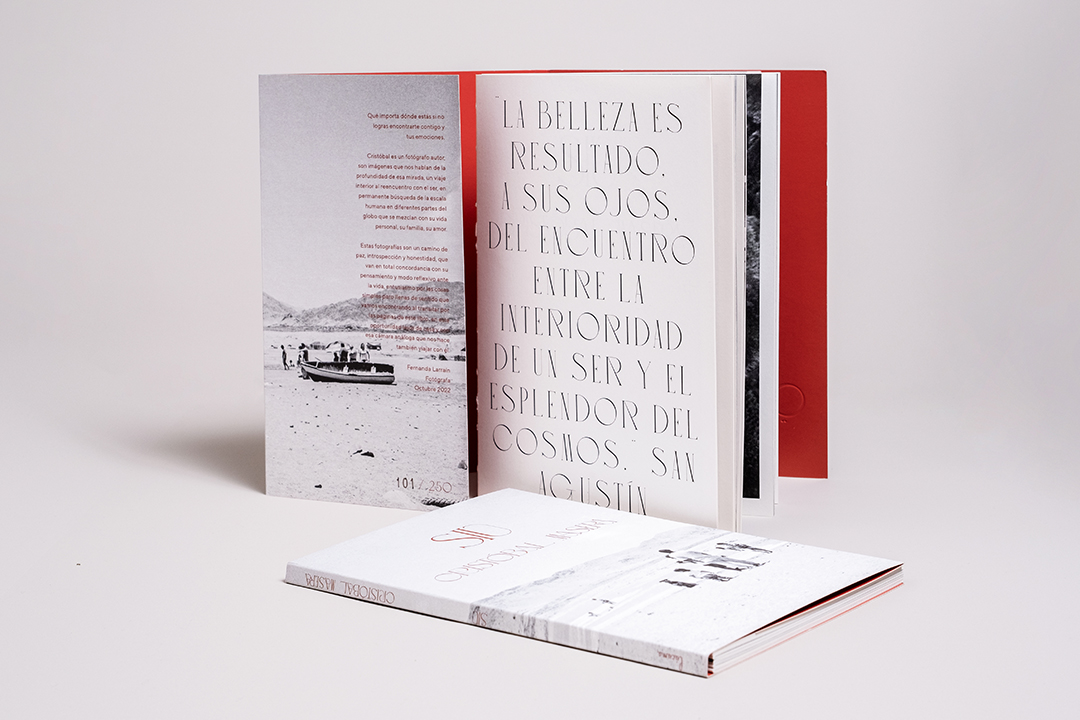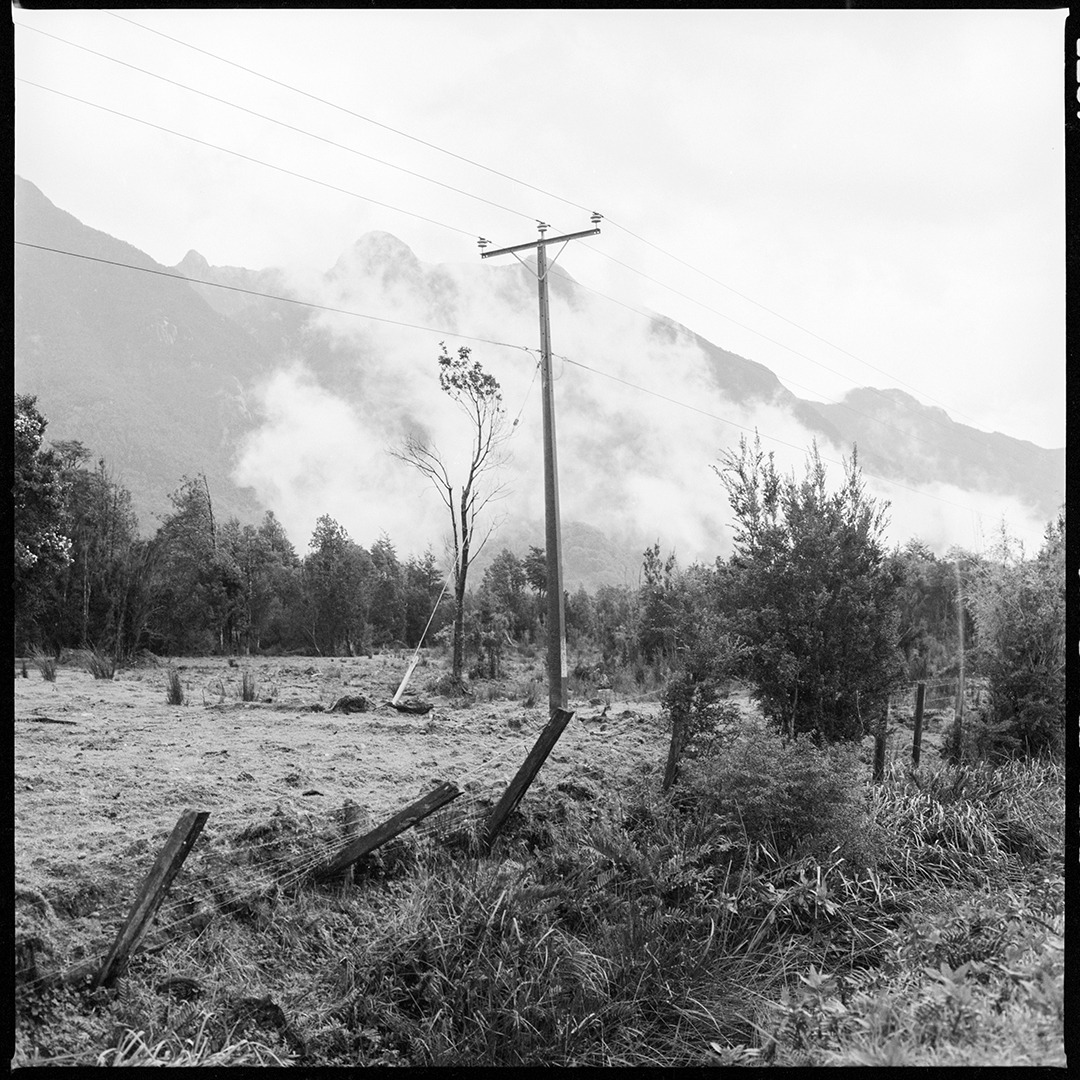Cristobal Masera: “SIU”
Cristóbal Masera‘s most recent exhibition SIU at CityLab Global in Santiago de Chile is a compelling testament to the power of photography as a reminder to be active witnesses of the beauty in the world around us, even in the seemingly mundane and unrelated moments. In this special feature for Lenscratch, Latin American editor Vicente Cayuela reviews Masera’s exhibition and photo book SIU after attending a guided tour of his exhibition at CityLab Global in Santiago de Chile.
Cristóbal Masera was born in 1983. His journey into photography began as a self-taught pursuit, fueled by his enduring fascination with visual storytelling. Since 2007, he has been honing his skills in photography and analog darkroom techniques, collaborating with seasoned photographers such as Luis Poirot and Fernanda Larraín, among others. After completing his degree in Business Administration, Cristóbal founded a publishing house where, for a decade, he served as the editor-in-chief of “One Book,” a fashion and trend magazine. During his tenure, he oversaw the production of over 100 publications. Since 2016, Cristóbal has been immersed in the world of photography books as an editor, all while pursuing an independent career as a professional photographer through his studio, Lúcuma. Simultaneously, he continues to nurture his creative vision by working with analog black & white photography and darkroom processes. He actively participates in both solo and group exhibitions, further enriching his artistic journey.
Follow Cristóbal on Instagram: @cristobalmasera
Website: www.lucuma.cl
PROVIDENCIA, CHILE -. “These photographs are my testament,” declares the vinyl text adorning the glass door, ushering me into the final day of Cristóbal Masera’s exhibition SIU at CityLab Global, a sleek, bustling cultural hotspot in downtown Santiago. Curated from a staggering collection of nearly 800 photographs on five different continents, the show encapsulates the artist’s extraordinary decade-long trajectory of profound creative evolution.
Amid this vast archive captured between 2012 and 2022, Masera’s thoughtfully narrowed visual travelog comprises 30 one-of-a-kind black and white prints. The photographs were personally handcrafted by the artist in a traditional darkroom using the analog silver gelatin process on cotton paper. Each artwork bears Masera’s signature in graphite, unveiling the date and location where the photograph was taken: Zambia’s lush jungles, Indonesia’s vibrant archipelago, and South Africa’s dramatic coastlines represent but a few of the corners where the Chilean photographer has ventured.
Fifteen landscapes grace the southern expanse of the gallery’s charcoal-gray wall. The remaining prints hang on either side of two mobile grid display stands, thoughtfully arranged in sets of three and four, encased within sleek metal frames. The images were captured using medium format FUJIGS645s and HASSELBLAD 500CM cameras on ILFORD Fp4 film. Nestled in the corner, an artfully graffitied black-and-white video booth immerses visitors in a continuous loop of clips captured during the artist’s many adventures. To the right, the final remaining copies of Masera’s exclusive limited edition, hand-made books are carefully presented on a table.
As I travel the world through each of these spaces, an Italian greyhound in all-black dog couture tugs at its owner’s leash and struts dandily towards me, whimsically reflecting back to me the vanity of my own art snob attire. Masera himself—who celebrates his 40th birthday this year—has a laid-back attitude as he puts the finishing touches on his guided tour. A white scarf drapes around his neck, accentuating his short, brown curls. His black shoes and sweater worn with effortless style, revealing glimpses of his tattooed arms as he greets everyone who walks into the gallery: family, friends, a closely-knit group of fellow photographers, and some curious passersby tip-toeing around their less fashion-savvy dogs.
“The word SIU originates from a photograph I took in Kasanga, a village on the shores of Lake Tanganyika in Tanzania,” Masera begins, addressing the rapt audience that has formed a tight semi-circle around him. “While walking through the village, a thirteen-year-old girl approached me, requesting a portrait. I captured her image, and then everyone continued on their respective journeys … Some time later, when developing the negative and enlarging the image, I noticed that the word SIU was faintly visible in the clouds, which in Swahili—Tanzania’s official language—means SMILE.”
For Masera, this moment entailed a great sense of gratitude and reassurance. “[It] was a confirmation that my journey up to that point was real and undoubtedly the right path—that everything I had experienced had led me to share a moment with that radiant being, a little girl who was smiling with just one shoe on her feet.” This initial encounter—portrayed as the opening image of the exhibition—quickly introduces what SIU is all about: a solemn invitation to find ourselves readily in the souls of others, anywhere, randomly, at any time. This wide-eyed curiosity encapsulates the artist’s overarching approach to life. “When you are immersed in a reality completely foreign to you, you begin to feel a kind of magic that intertwines the lives of all the elements present,” reflects Masera.
Among the exhibits, however, SIU stands out as one of the rare photographs where the subject gazes directly into the camera. In contrast to a penchant for portraits, Masera is drawn to populated landscapes and scenes where subjects blend into the surroundings. “I often maintain a distance from the scene,” remarks the artist. “That scale is what helps me understand our role as human beings.” Deeply piercing and perceptive, it is this panoramic worldview that bestows upon Masera’s work its profound and unifying essence despite the vastness of the latitudes it encompasses.
It is hard to single out particular standouts as the show impresses with its curatorial coherence and delicate craftsmanship. Fernanda Larrain, one of Masera’s mentors and the owner of the photo lab where the artist has been refining his craft over the past years, eloquently notes, “There’s something profoundly captivating about the consistency of his perspective, despite the travels, cameras, and countries. There is a vision that weaves its way throughout the exhibition, and it holds immense significance. We can unmistakably discern that it’s the hand of the same artist behind each photograph.” Larraín, who played a pivotal role in the editing of the accompanying photo book, stands as a steadfast ally to the artist. “Going down from 800 photographs to 30 in this exhibition and 90 to the book was a challenge,” remarks Masera, extending his heartfelt gratitude to his fellow analog photographer for her collaboration. The resulting silver gelatin prints exhibit a remarkable contrast and execution.
One particular section featuring four portraits displayed in two rows of two showcases Masera’s ability to maintain a sense of distance even as he gets closer to his subjects. According to the artist, photographing is an act that pays “reverence for the role each person plays in life.” Portraits like Iris and Raja Ampat Tuna draw attention to the unity that can be found among individuals by highlighting the significance of labor and craft in shaping their identities and experiences. The smart inclusion of Dani in this section—a portrait of a woman meditating in the middle of a lush jungle—evokes a powerful sentiment: Labor, whether it’s that of a seamstress, a spiritual worker, a fisherman, or a photographer, is a contemplative and honorable practice, akin to meditation and the art of perception. It evolves over time through dedicated practice and mindfulness.
Masera’s profound grasp of photography as a conduit for connection and a tool for making sense of the world elicits a profound sense that, despite our inherent otherness, everything ultimately coexists in harmonious unity as a collective whole. “In society or in solitude before nature, we carry out daily tasks that influence our decisions, enabling us to move forward day by day,” says the artist. “Routines of waiting, of effort… Emotions that lead us to belong simultaneously to the same reality, where, no matter how different they may be, all are united from the deepest core with the same purpose of being.” This serves as the unifying thread skillfully weaving together seemingly unrelated moments and subjects, all guided by the artist’s discerning eye for tonal subtleties, compositional structures, and occasionally, by something far more ethereal and elusive.
As the sun sets, the gallery bathes itself in the rich, blood-orange hues of evening while Masera concludes his talk, inviting the audience to ask questions. When I inquire about the most profound lesson or insight he’s gleaned from a decade of capturing the world through his lens, his response is elegantly simple yet incredibly valuable advice for any artist: “Patience.” Masera, who candidly acknowledges that film slows him down and that “it takes him a lot of time to do things,” has meticulously cultivated this virtue over the years. “All those traveled kilometers allowed me to learn about the patience of being, to appreciate the power of waiting.” This patience, however, isn’t aimed at shallow or fame-seeking objectives, but rather at deeply personal quests of self-fulfillment and the refinement of his craft: “I feel that it’s more valuable to go unnoticed and achieve your dreams than to reveal who you are without achieving any,” remarks the artist.
There is a remarkable self-awareness and growth that makes SIU a really compelling exhibition. “All the images in this project were captured during a period of my life when I didn’t consider myself a photographer,” says the artist. “It spanned more than ten years, and now that I see them in retrospect, they represent a mysterious quest to be and feel something beyond intellect.” It is this pursuit, this need for learning, adrift, in motion, and “driven by a constant sense of beauty” that has allowed him to create a powerful body of work that not only rings deeply intimate and honest but also tenderly universal. Cristobal Masera’s SIU is the product of a lifelong love affair with beauty, the world, and the visual. It is an invitation to allow ourselves to be immersed in realities outside of our daily world. “We are accomplices to a reality that seems to lack meaning,” says the artist. “However, we can choose to cling to the familiar or opt to become active witnesses of the beauty of the unknown.”
Vicente Cayuela is a Chilean multimedia artist working primarily in research-based, staged photographic projects. Inspired by oral history, the aesthetics of picture riddle books, and political propaganda, his complex still lifes and tableaux arrangements seek to familiarize young audiences with his country’s history of political violence. His 2022 debut series “JUVENILIA” earned him an Emerging Artist Award in Visual Arts from the Saint Botolph Club Foundation, a Lenscratch Student Prize, an Atlanta Celebrates Photography Equity Scholarship, and a photography jurying position at the 2023 Alliance for Young Artists & Writers’ Scholastic Art and Writing Awards in the Massachusetts region. His work has been exhibited most notably at the Griffin Museum of Photography, Abigail Ogilvy Gallery, PhotoPlace Gallery, and published nationally and internationally in print and digital publications. A cultural worker, he has interviewed renowned artists and curators and directed several multimedia projects across various museum platforms and art publications. He is currently a content editor at Lenscratch Photography Daily and Lead Content Creator at the Griffin Museum of Photography. He holds a BA in Studio Art from Brandeis University, where he received a Deborah Josepha Cohen Memorial Award in Fine Arts and a Susan Mae Green Award for Creativity in Photography.
Posts on Lenscratch may not be reproduced without the permission of the Lenscratch staff and the photographer.
Recommended
-
Earth Week: Simon Norfolk: When I am Laid in EarthApril 27th, 2024
-
Shinichiro Nagasawa: The Bonin IslandersApril 2nd, 2024
-
The International Women in Photo Association Awards: Lorraine Turci: The Resilience of the CrowMarch 16th, 2024
-
The International Women in Photo Association Awards: Rayito Flores Pelcastre: Chirping of CricketsMarch 14th, 2024
-
The International Women in Photo Association Awards: Louise Amelie: What Does Migration Mean for those who Stay BehindMarch 12th, 2024



















































































